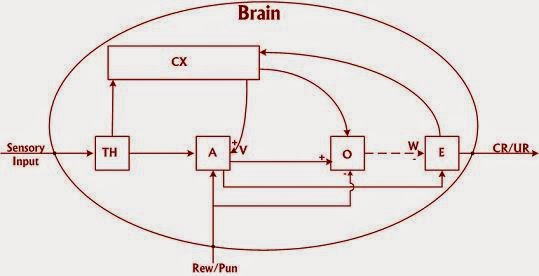Computational Model
Computational Model

COMPUTATIONAL THEORY OF MIND
In philosophy, a computational theory of mind names a view that the human mind or the human brain (or both) is an information processing system and that thinking is a form of computing.
The theory was proposed in its modern form by Hilary Putnam in 1961, and developed by the MIT philosopher and cognitive scientist (and Putnam's PhD student) Jerry Fodor in the 1960s, 1970s and 1980s.
Despite being vigorously disputed in analytic philosophy in the, the view is common in modern cognitive psychology and is presumed by many theorists of evolutionary psychology; in the 2000s and 2010s the view has resurfaced in analytic philosophy .
The computational theory of mind is the theory that the mind/brain is a computer.
The theory can be elaborated in many ways, the most popular of which is that the brain is a computer and the mind is the program that the brain runs.
An algorithm is an effective procedure: a step-by-step set of instructions that always results in an output (the same output every time), based only on the form of the input, and not what it means.
Algorithms terminate in a finite number of steps, and they work for any admissible input.
A program is the instantiation of an algorithm in a particular computer language.
So the computational theory of mind is the claim that the mind is a machine that derives output representations of the world from input representations in a deterministic (non-random) and formal (non-semantic) way.
Computational theories of mind are often said to require mental representation because 'input' into a computation comes in the form of symbols or representations of other objects. A computer cannot compute an actual object, but must interpret and represent the object in some form and then compute the representation.
The computational theory of mind is related to the representational theory of mind in that they both require that mental states are representations.
However the two theories differ in that the representational theory claims that all mental states are representations while the computational theory leaves open that certain mental states, such as pain or depression, may not be representational and therefore may not be suitable for a computational treatment.
These non-representational mental states are known as qualia. In Fodor's original views, the computational theory of mind is also related to the language of thought. The language of thought theory allows the mind to process more complex representations with the help of semantics.
Computational Model2

Computational Model3

Computational Model 4

Computational Model 5
